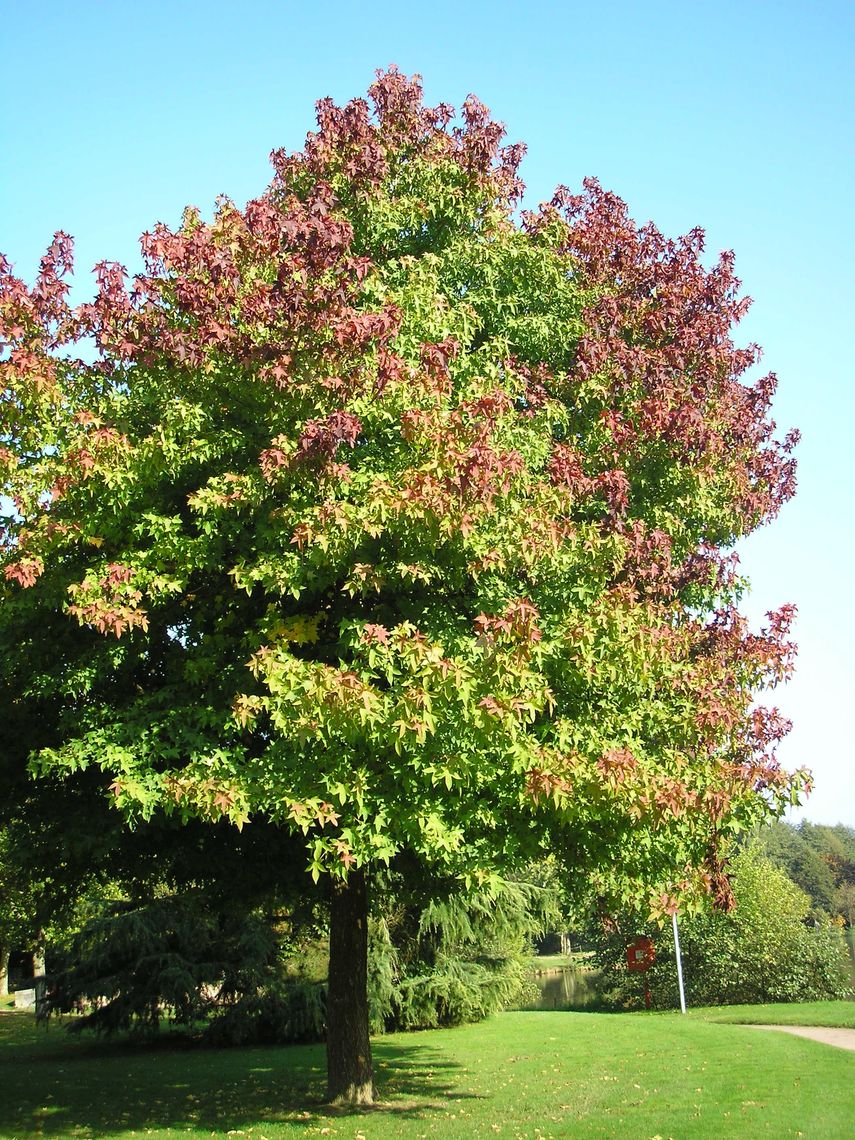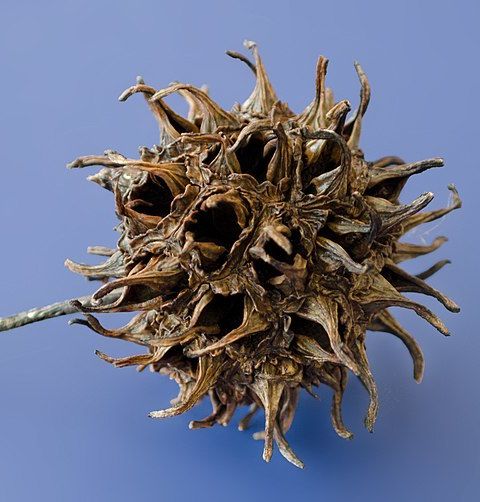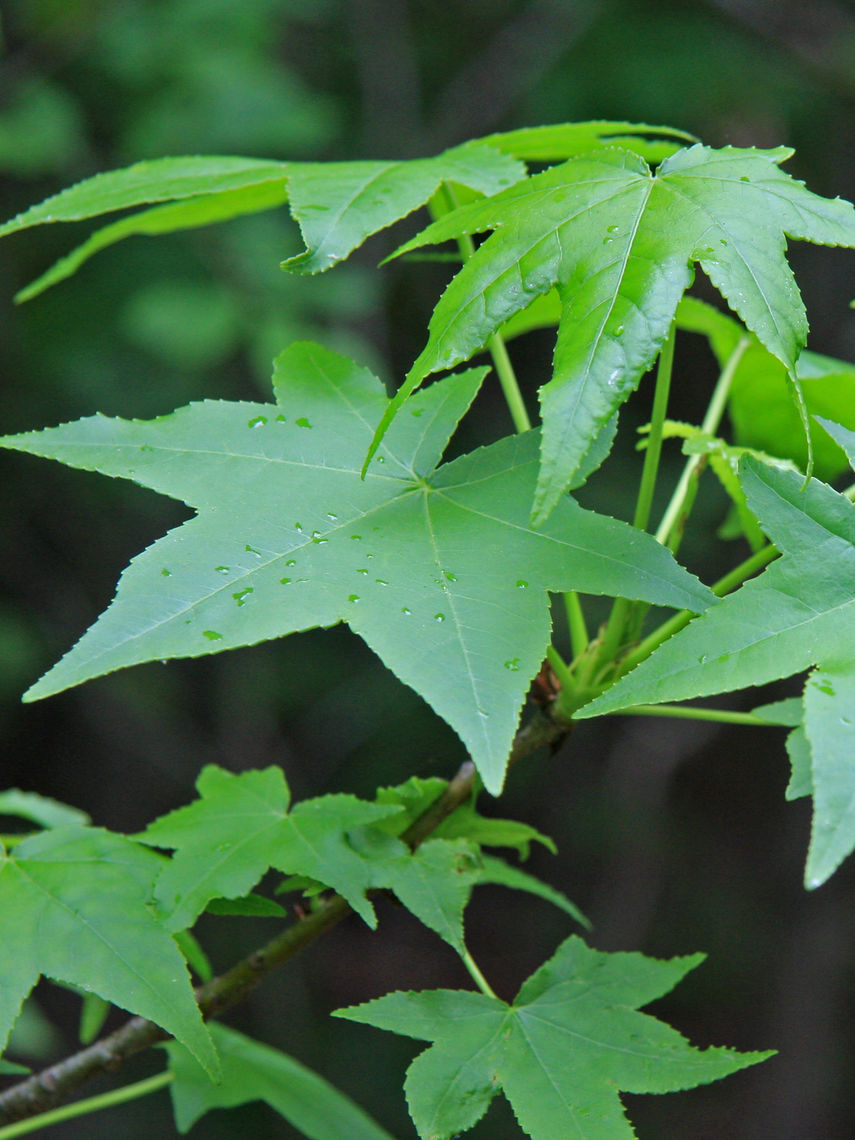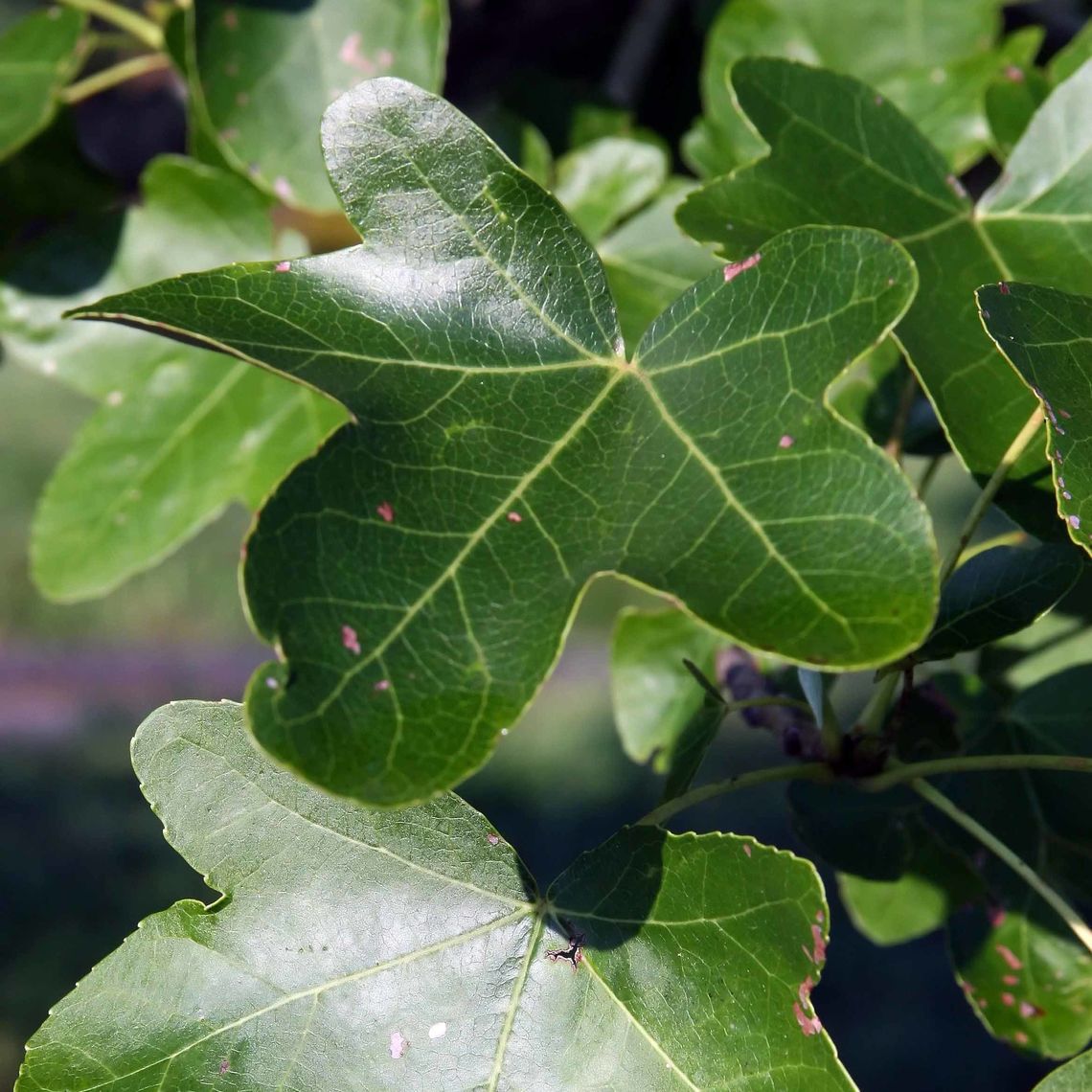Sweetgum Tree (Liquidambar styraciflua)
The sweet gum tree is most well known for its star shaped leaves that turn shades of yellow, orange, red, and purple in the fall. These leaves are fragrant if bruised. In the winter, you will also be able to recognize this tree by the spherical, dark brown, and spiky gumballs that often litter the surrounding area. This tree attracts birds, insect pollinators, and small mammals.
Family: Hamamelidaceae (Witch Hazel)
Characteristics: The 4-inch to 7.5-inch-long leaves are star-shaped, toothed, dark green, and have 5-7 lobes. In the fall, leaves turn bright shades of yellow, orange, red, and purple. In April-May, non-showy, green-yellow flowers begin to bloom. The female flowers give way to dark brown gumballs which are hard, spherical, and covered in sikes. Bark is gray-brown and deeply furrowed with narrow ridges. This tree has a pyramidal shape when young and develops a more rounded crown with age. It grows 60-75 feet high and 40-50 feet wide.
Foliage: Deciduous (leaves lost seasonally)
Geographic Origin: Eastern United States, Mexico (native)
Cultivation Notes: Requires low maintenance. Does best in full sun, and is intolerant to shade. Prefers acidic, moist, and well-drained soils. Alkaline soils should be avoided.
Number on Campus: 10
Sources: Dirr, Morton Arboretum, Missouri Botanical Garden
Liquidambar styraciflua 'Rotundiloba'
Â
The rotundiloba cultivar has the same 5-7 lobed, star-like leaf shape of the sweetgum tree, except the leave's edges are rounded rather than pointed. These leaves are deep green and turn yellow to burgundy in the fall. Most notably, the rotundiloba does not produce the infamous sweetgum gumball fruits. Its flowers are non-showy, petal-less, monoecious, and bloom in small clusters in the spring.
Number on Campus: 2




